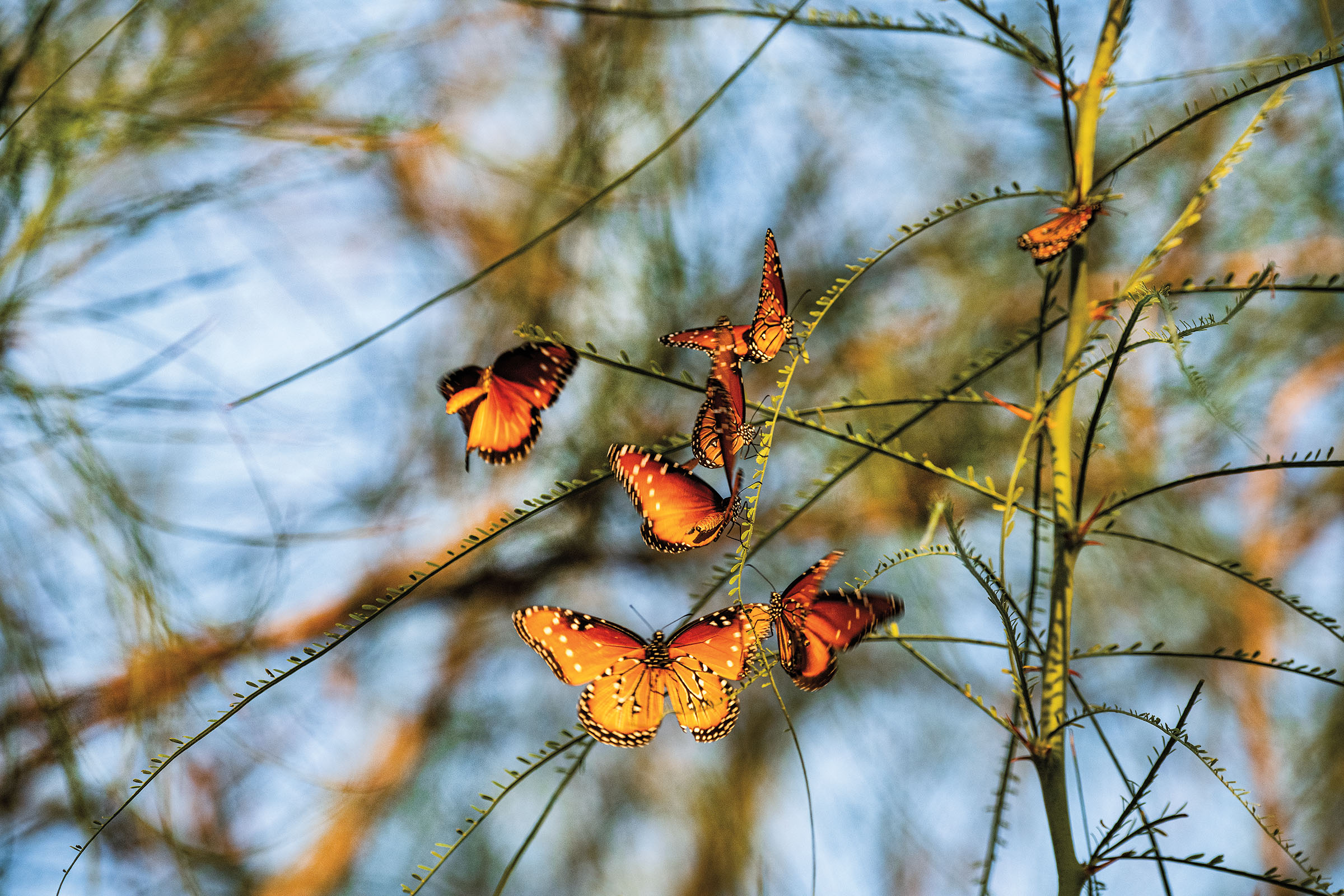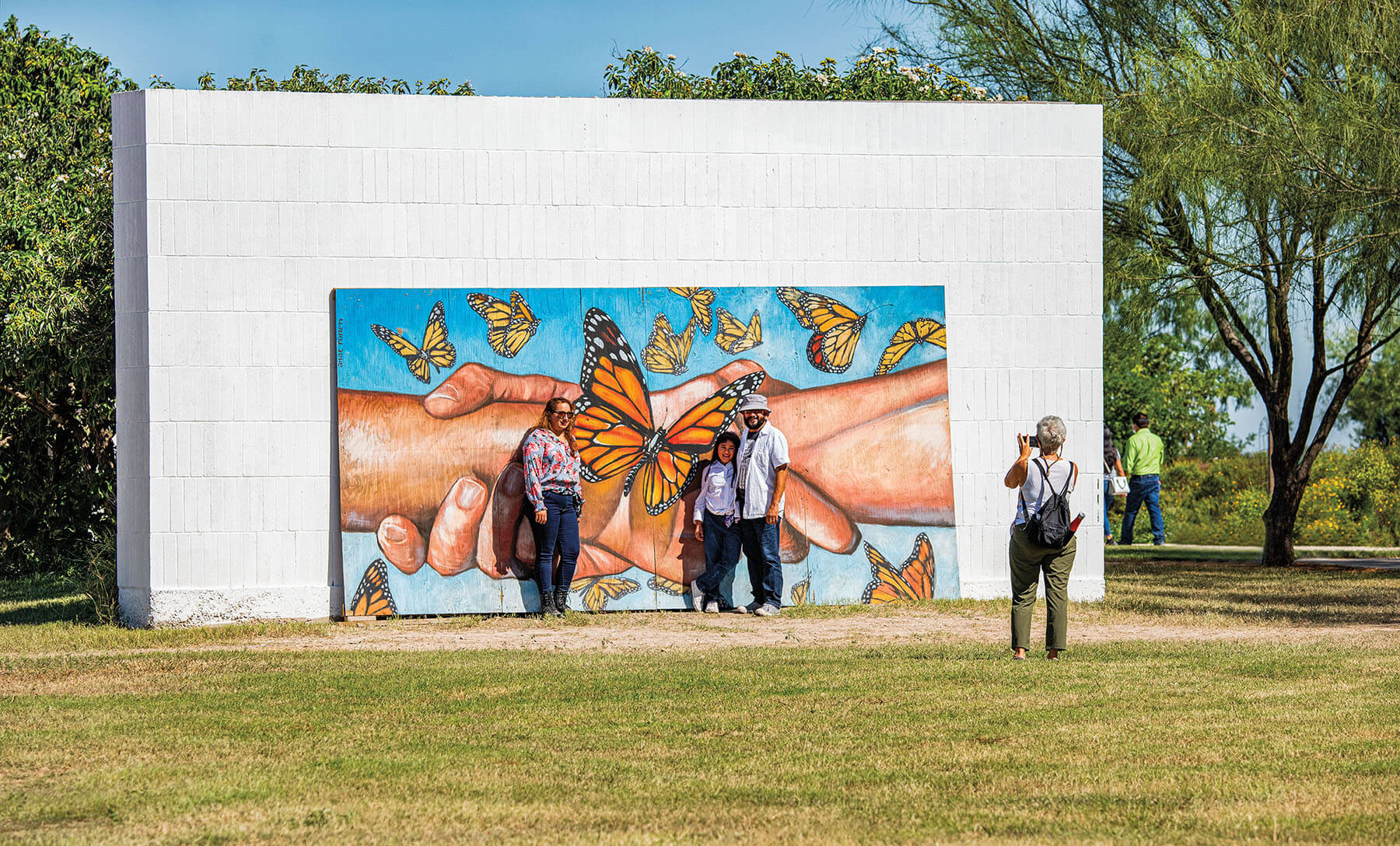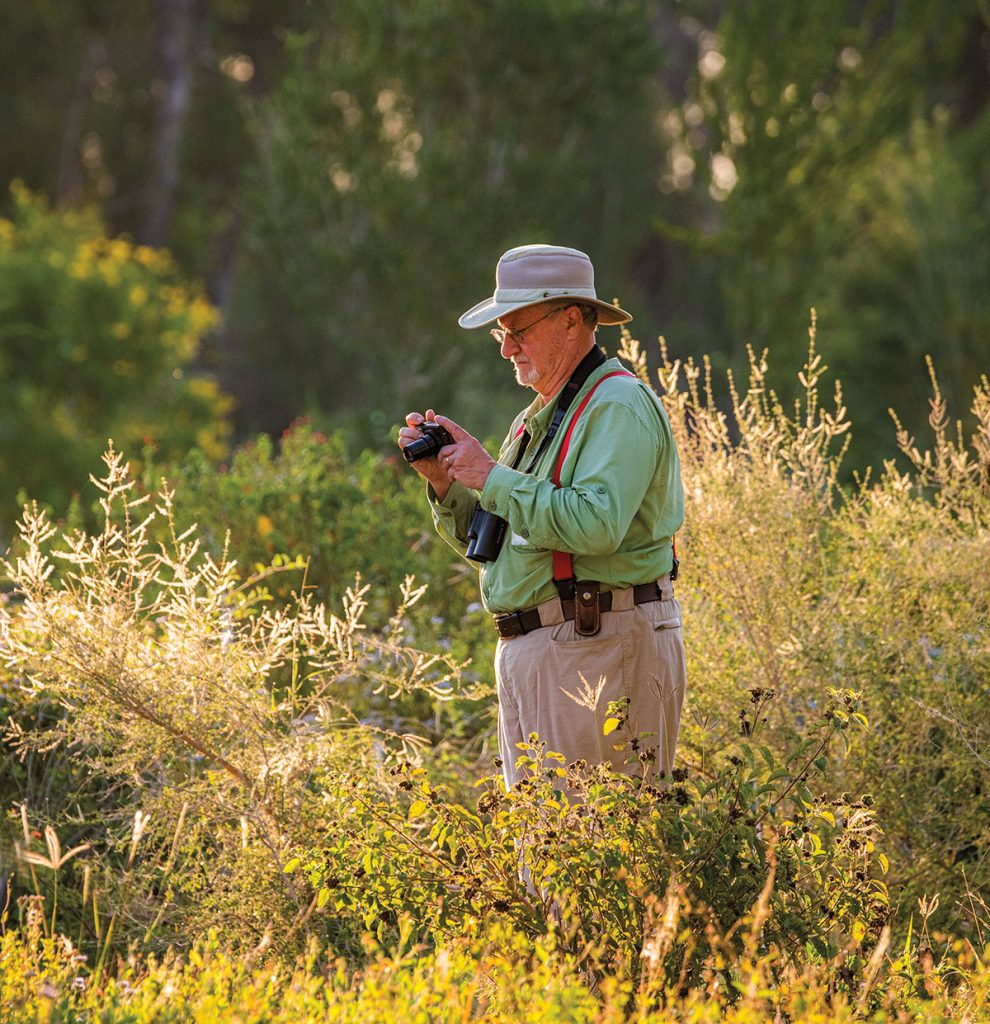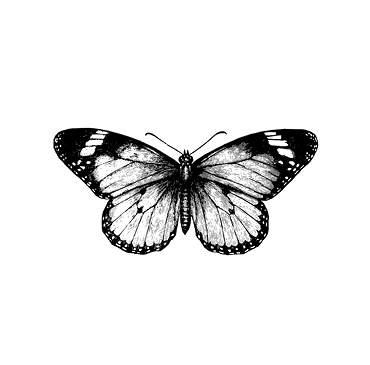
As soon as I stepped out of the car, the star of the National Butterfly Center showed itself. In the gardens in front of the visitors pavilion, located in Mission, clouds of queen butterflies floated on wild huddles of milkweed and mistflower flecked with lavender and white blooms. At first, it was hard to discern the shimmer of the butterflies from the shimmer of the blossoming plants. But soon, the delicate winged insects became more visible, looking like glinting coins of sunlight and color against the late October landscape of South Texas. Many Lone Star naturalists might be aware of the birds and hawks that migrate through the Lower Rio Grande Valley, but perhaps not as many know about the various butterflies that make their home in this southern corner of Texas. “There are approximately 700 butterfly species in North America,” said Marianna Treviño-Wright, the center’s executive director. “Nearly half of those can be found in the Rio Grande Valley. Not because they are migrating, but because they are endemic to the area.”
National Butterfly Center
3333 Butterfly Park Drive, Mission.
956-583-5400;
nationalbutterfly
center.org
Open daily, except Easter.
Adults: $10.
Children, ages 5-12: $5.
Since 2002, the National Butterfly Center’s mission has focused on habitat restoration for native plants that support and sustain the diverse butterfly population. “We continue to expand our growing operation as native plants disappear from the surrounding landscape,” Treviño-Wright said. The center also encourages individuals to cultivate their own butterfly-friendly gardens by planting native vegetation and nurturing the growth and full life cycle of these beautiful and vital insects. Butterflies—like honey bees, birds, and bats—are pollinators that sustain flowering plants and nurture biodiversity.
Located on former commercial onion fields, the center was established by Jeffrey Glassberg, founder of the North American Butterfly Association, a nonprofit that promotes awareness of butterfly conservation. For many years, Glassberg, who has a doctorate in biology, has guided tours of butterfly enthusiasts from around the country and the world to the Lower Rio Grande Valley because of the 11 distinct biosystems that converge in this four-county region. On a trip to Mission during which he witnessed an old Oblate monastery covered in butterflies, Glassberg realized the area could be an ideal spot for a butterfly park. “It’s the northernmost outpost of the tropics, and you can see butterfly species here that can’t be seen anywhere else in the country,” Glassberg said. One thing led to another, and the center was created.


Avid photographers are common amid the center’s 100 acres of gardens, fields, and walkways.
The 100-acre center and its surrounding trails and gardens are located about a mile from the Texas-Mexico border. On the right side of a quiet two-lane road is a vibrant welcome sign and the visitors pavilion. The contemporary concrete building was completed in 2010 and was designed by Wendy Evans Joseph, who also designed the U.S. Holocaust Memorial Museum in Washington, D.C., and The Women’s Museum in Dallas. Upon entering the spacious indoor space, I noticed the current butterfly checklist for the center. In the month of September, 41 species were sighted. In October, this number increased to 112, including ornythion swallowtails, Gulf fritillaries, American snouts, and sickle-winged skippers. Just outside the pavilion, a high school group worked near one of the greenhouses, replanting various plant starters. In another garden, a group of teens planted bushes. Through this engagement, the center fosters environmental stewardship in the next generation.
Treviño-Wright took my husband and me for a walk on the Lower Hackberry Trail. Isolated flutters of tawny emperors and bluewings lifted and rested and lifted again from the spindly branches of the hackberry trees and the logs slathered with “banana brew.” This concoction of overripe bananas, brown sugar, and dark, unpasteurized beer made by the staff provides a nectar that butterflies would normally feed on in woodland habitats. An Eastern screech owl slumbered in a cavity high in one of the hackberry trees, its gray-brown features blending in with the pearly ridges of bark. Further down the trail, yellow butterflies—large orange sulphurs and little yellows and dainty sulphurs—hovered above an unruly tangle of native plants. Chocolate-colored chachalacas hopped along the lower branches, issuing their discordant calls and responses. Several green jays joined in, the vivid birds easy to spot with their bright sapphire heads, emerald-green overfeathers, and tailfeathers bearing flashes of yellow. Our walk was like wandering through an extraordinary outdoor museum of dazzling natural beauty.
During recent years, the National Butterfly Center has been cast into the spotlight for reasons other than its conservation efforts. The initial clashes erupted when workers—under a directive from the previous presidential administration—began to clear away land in preparation for construction of the border wall on the center’s property. Through legislative actions, Congress halted this construction due to grassroots action and public outcry, but the threat of construction remains and lawsuits continue. A visitor will see that the 24- to 30-foot border wall is being built on both sides of the center, with a 150-foot-wide Border Patrol “enforcement zone” stripped of vegetation spreading through the Lower Rio Grande Wildlife Conservation Corridor. “Contrary to public opinion, many species of butterflies can’t fly over the wall,” Treviño-Wright said. “And every new mile of border wall construction results in the elimination of at least 20 acres of native habitat.”
Last year, the center acquired an additional 350 acres—a piece of property once owned by The Nature Conservancy—about 6 miles west of its current location. “For us, the transferring of property to the National Butterfly Center made a lot of sense. They are a trusted partner with more capacity locally,” said David Bezanson, land protection strategy director for The Nature Conservancy in Texas. “The property is located near the center, so it offers a natural expansion of their operations and a way that property can enjoy more public use and interpretation.” The land will be used to propagate native species and house additional building facilities. About 80 acres will serve as a refuge for the manfreda giant-skipper, Texas’ most endangered resident butterfly.

Take Flight
The National Butterfly Center hosts its annual Texas Butterfly Festival Nov. 4-7. Programming includes guided walks, lectures from experts in the field, and a community day when admission is free. texasbutterflyfestival.com
Butterflies like temperatures above 70 degrees, so check the weather before planning a visit to the center. Camping is available in neighboring Bentsen-Rio Grande Valley State Park, which also has a hawk observation tower for sighting birds, raptors, and butterflies. tpwd.texas.gov
Peak butterfly season occurs in late fall thanks to September rainfall, but visitors can also see many species during spring when the wildflower blooms are in their full glory. Guests to the center visit from all over Texas and the country, and even from distant places like Australia, Brazil, Korea, and India. “The Rio Grande Valley is the very best place in all of Texas to experience an abundance of bugs, butterflies, and birds, many of which can’t be experienced anywhere else in the state,” Treviño-Wright said. “We want visitors’ eyes to be opened and for them to become evangelists for not only Texas but for our region.”








